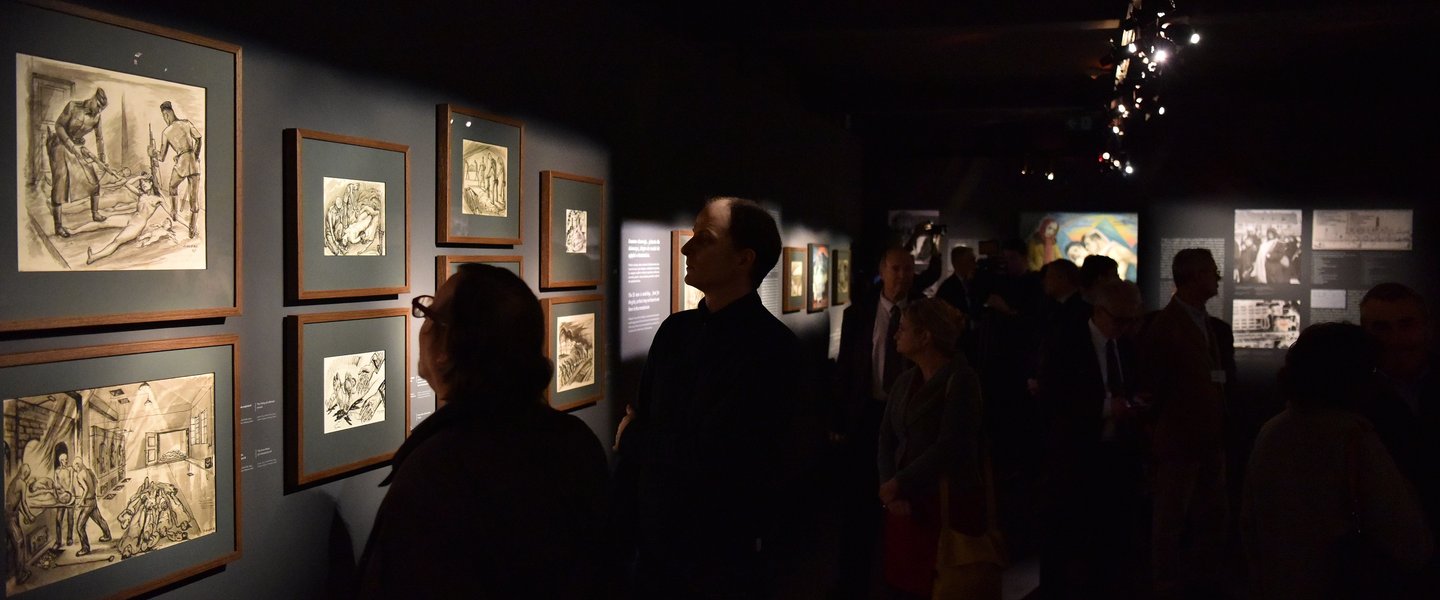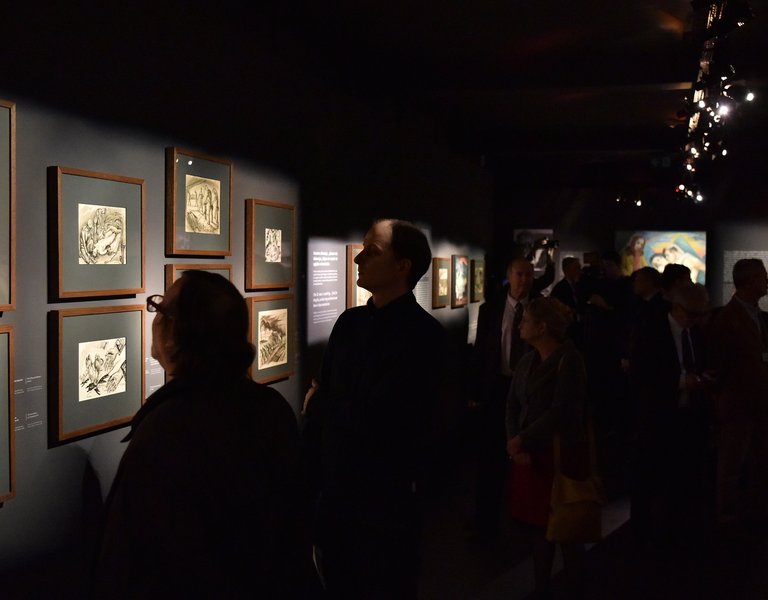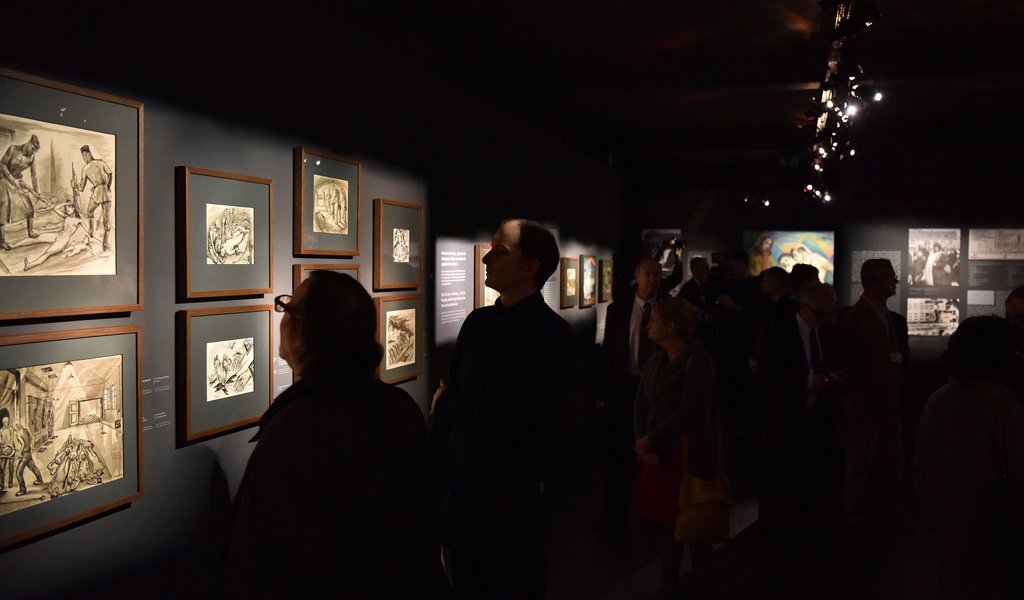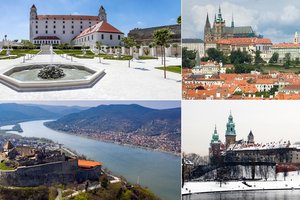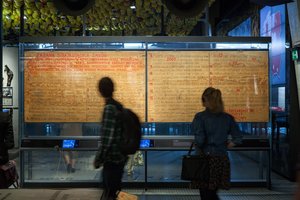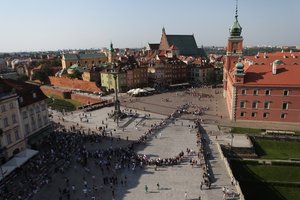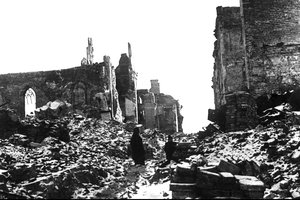How to educate about Auschwitz in the 21st century?
“Auschwitz is a history of extreme dehumanisation. From the very beginning, the world realised that the remains of camps must serve as a dire warning. In order for this warning to be effective, education has to stir people’s imagination of their own responsibility for fighting evil or for passivity”. About the challenges in the education about the Auschwitz history today we talk with Dr. Piotr M.A. Cywiński, Director of the Auschwitz-Birkenau State Museum in Oświęcim.
POLAND.PL: How to educate about Auschwitz in the 21st century?
Dr. PIOTR CYWIŃSKI, DIRECTOR OF THE AUSCHWITZ-BIRKENAU STATE MUSEUM: Generations come and go, former prisoners pass away, new information carriers appear, facts are becoming more distant in the history of Europe and the world, but the message conveyed by the Holocaust and German concentration camps remains the same. It is just a matter of finding the best methods at a given time. In the 1990s, when it seemed that denial was one of the most serious threats to remembrance, the Holocaust was systematically introduced into school curricula. Today, when the negation of the genocide is no longer - at least in Europe - the primary threat, and it is the passivity of people who know quite a lot about those times that is more alarming, we should wisely introduce the elements of this teaching into other subjects, which are more linked with our today’s responsibility, sensibility and decision making. By that I mean different forms of civic education, mass media classes, social studies... as well as religion and ethics in order to make our societies more aware of their responsibility for the times we are living in.
Does the Internet make it easier or more difficult to get the message of Auschwitz across to the young people?
The Internet is not only a tool, but also a space. It is a tool in the sense that without it it would be difficult to reach poor or distant countries, where a flight to Auschwitz is out of financial reach for many social groups. It was with these groups in mind that we created a virtual tour, many historical commentaries, and an Internet bookshop. It is also a space because many discussions and debates shifted to social media. Therefore, this is also where we need to convey our message. In any case, it does not only apply to young people. The age curve of our Facebook page users is fairly representative of the entire Internet community. It is the 25-45 year olds that dominate.
You can often hear that people who were born in the 21st century and grew up in relatively stable surroundings have a different perception of reality, and that the Internet and the virtual world have always been around for them. Is it true that for these people the history of Auschwitz and of other camps is more abstract than for the youth of 20 years ago?
The power of this place is its authenticity. By walking the same paths that the victims took, people experience a kind of “rite of passage”. Though borrowed from the sociology of religion, I think the term accurately reflects the essence of a visit to Auschwitz. For many people such a deep and timeless immersion in the site of a crime evokes a very dire message, breaking many stereotypes that are very common and relax our everyday vigilance. Authenticity also means the rejection of any ideological bias. It is very important. That is why it is fundamental to keep a distance between the world of politics and the world of a memorial site. We should also remember that young people are not the only ones to visit Auschwitz. It is a place where different generations, cultures, traditions, languages, religions and worldviews meet. I think that the primary objective of restoring this memory is to alarm people, or to wake them up from this lethargy shrouded in the illusory impression of perennial security.
During the 10th International Conference on Holocaust Education, you took part in a discussion with Avner Shalev, the director of the Yad Vashem Institute, who stressed the importance of memories and accounts of prisoners. He also warned against losing the meaning of their message in a modern, attractive form. How to strike a balance between presenting accounts and facts, and teaching about the history of camps on the one hand, and the demands of a modern audience on the other hand?
You need to talk to people because forms evolve very quickly and you need to have a sense of what is becoming the norm and what is a novelty. Nowadays it may sound odd, but in the late 1990s, it was debated whether Memorial Sites should have their own websites, and a little over a decade ago, many people said that a comic book, as a form of expression is unworthy of describing gas chambers, whereas five years ago serious international experts believed that Memorial Sites should not be active on Facebook. Therefore, the question is not how to make the message of the survivors more attractive, but how to clash it with today’s culture, whose communications evolve so quickly that it is impossible to predict how it will change, for instance, in five years.
What education initiatives concerning Auschwitz or other concentration camps and death camps can you name as the most successful and able to get their message across to their audience?
It very much depends who the audience is. I do not believe that we should speak in the same way to all people. Without any distortions, the same historic truth can be said in different ways depending on the audience, similarly to speaking in different languages. The most important element of education is visiting the former camp site. It leaves a lifelong impression. That being said, this “rite of passage” should be accompanied by reading the memoirs of victims. That way, the words become inscribed into the explored space, while the space becomes more legible thanks to the words. These two authenticities - of words and of space - should merge together in the experience of the audience. That is why it is so important that in the 1990s and later, the last living survivors wrote and published their memoirs in so many countries.
However, education programmes addressed to selected groups are quite different. They can address occupational, regional, age and topical groups. Here, you should get to know the group and learn about the potential for implementing the message of Auschwitz in their future lives. For me, one of the most important programmes are the activities we have been conducting in remand centres and prisons all over Poland for almost a decade. While it is easy to talk to high schoolers about the need to build a humane and just world, but it is much more necessary to get this message across to adults who have been diagnosed with a problem by the justice system, and who, after serving their sentence will leave prison and rejoin our societies. I believed that in this area we cannot spare any efforts and in a few years we have reached several dozen thousand inmates with different exhibitions, film screenings, presentations, discussions and other activities. We met with some great people, prison educators, whose experience helped us prepare more suitable programmes.
Are, or could, the testimonies of persons who experienced the trauma of a concentration camp in our times, for example in North Korea, be helpful in making the contemporary audience aware of what Auschwitz was?
Not only the survivors of concentration camps, but also of contemporary genocides. Propaganda changes, ideology changes, latitudes change and the tools of murder, but the loneliness of an innocent victim stays the same. However, we should be very careful not to fall into the trap of comparisons, which may end with a painful and counterproductive competition as to who suffered the most. It is still a very difficult path. However, Auschwitz became a symbol all over the world and the discourse naturally clashes with different dramas. We have shown our exhibitions in former Soviet forced labour camps, we organised conferences in Rwanda and Yerevan, we provided restoration advice in Kurdistan and Cambodia. These are all places where unimaginable human dramas took place. However, it is important not to muddy the message of Shoah and Auschwitz in worldwide suffering, because we would destroy the power of its authenticity.
Facing the history of Auschwitz, we are tempted to oversimplify it to the cliché of fight of good versus evil. We know that reality was very complex, and the boundary between the perpetrator and the victim could be blurred - that was the cruelty of the camp. How to convey this to young people, or even children?
First of all, we should avoid exaggerating behaviours. In a sense, if we say that a member of the SS behaved honestly, e.g. helped someone escape, or a prisoner functionary supported some fellow inmates while they beat others, then our message will be closer to the general human condition. Not only is creating a myth of irreproachable victims and unambiguously inhumane perpetrators absurd, but it does not correspond with human experience, either.
The camps were designed to bring out evil in everyone, in both SS members and prisoners. Some were able to fight this system, some less so. Others decided that it was not the fight and following these principles that would allow them to survive. A thorough study of a given case and all circumstances must play a major role in such education programmes. As well as, evidently, understanding the fact that we are not able to judge all cases, since we did not go through that hell, and because our norms and our assessment are not the norms of those times. Inevitably, we lack certain imagination and we always will. Hopefully.
Some time ago, an article was posted on the Internet featuring inappropriate photos that some visitors take while touring the camp. A selfie against the backdrop of the wires, fooling around on the railway tracks, or a photo with a crematorium in the background, even without pulling faces, are controversial. Where does the lack of sensitivity come from? Is any photo from the visit too much? Maybe in a world where the visual message reigns, a photo made tactfully should not be slammed, but treated as an expression of remembrance and a tribute to the victims?
It is a normal clash of the culture of expression, especially of the young people, with a place in which they do not quite know how to behave. In such situations, people often take refuge in either emotional reactions or taking on defensive roles. Many visitors turn into photographers. They walk around snapping photos everywhere, while in reality their camera or mobile phone allows them to distance themselves from what they see. It is a defensive reaction. Today, a selfie is, albeit it is gradually becoming out of fashion, a certain form of expression. Once, a group of important politicians came on a visit and they asked me how I planned to deal with the serious problem of taking selfies on the camp grounds. I thought that it was actually tragic that those politicians did not see more serious issues in this place. But I answered differently by saying that I would try to deal with it once official political visits took place without accredited official photographers following the visiting VIPs. Because these are also selfies, only more complex ones.
In recent years, Poland has regularly been correcting the incorrect term which associates the adjective "Polish" with the death camps. Why is it incorrect?
It first appeared as a geographical designation. However, when it turned out that the phrase was starting to be used - even unwittingly - as a designation of those responsible, as a criminal activity of the state apparatus, then the issue was treated differently. And I believe that it is good that today more and more people know about this issue. Because, somehow, 90 percent of the newspapers that use the term “Polish camps”, when alarmed, change it to “Nazi camps” and few of them are capable of honesty and using the term used by UNESCO, namely “German Nazi camp.” In fact, it was an institution that formed an integral part of the German state, built on the lands of occupied Poland, and in the case of Auschwitz, additionally in a region annexed and incorporated into the German Reich.
Is there any other commonly spread, false information concerning Auschwitz that we should rectify in order to do history justice?
A lot of damage was done in communist times, when Soviet propaganda exaggerated the number of victims to make them a few times higher and did so without backing it with any proper scientific research, and secondly they tried to muddy the fact by the “numerous nations” that European Jews accounted for 90 percent of Auschwitz victims, especially since 1942 and the launch of the Extermination installation in Birkenau. Entire families were not sent there because they were Polish, French, Greek or Hungarian citizens, but only because they were Jews, all of whom the Third Reich wanted to slaughter. It allowed obscuring the difference, in public perception, in functions and objectives between a concentration camp and a death camp. It poisoned the historical awareness of many people, and to this day some have difficulty fully accepting the truth.
You have served as director for almost 13 years. After these years, can you say what lesson humankind can draw from Auschwitz?
Auschwitz shows the infinite ability of humankind to dehumanise other human beings. This is a history of extreme dehumanisation. From the very beginning, the world realised that the remains of camps must serve as a dire warning. Nevertheless, in order for this warning to be effective, education has to stir people’s imagination of their own responsibility for fighting evil or for passivity. Only then will remembrance fulfil its goal of changing views, behaviours and actions. If history is to be magistra vitae, man has to constantly feel the burden of his everyday responsibility.
Poland.pl

Dr. Piotr M.A. Cywiński, Museum Director
Born in 1972 in Warsaw. Doctor of humanities, medieval historian, graduate of Marc Bloch University in Strasbourg, the Catholic University of Lublin, and the Institute of History of the Polish Academy of Science. Director of the Auschwitz-Birkenau State Museum in Oświęcim since 2006.
Vice-president of the Warsaw Catholic Intelligentsia Club from 1996-2000, and president from 2000-2010. From 1996 until today a member of the Board of the association. A participant in the Polish-Jewish and Christian-Jewish dialogues, the Ukrainian-Polish dialogue, and other borderland dialogues. Graduate of the International Borderland School for Cultural, Educational, and Social Leaders Acting for the Sake of the Multicultural Regions of Central-Eastern Europe. From 2002 a member of the Polish Episcopate Working Group for discussions with the Greek Catholic Church in Ukraine. Member of the Polish Council of Christians and Jews since 2007. Named Ambassador of the International Year of Intercultural Dialogue in 2008.
In charge of accreditation for the 1999 visit to Poland by John Paul II, and later plenipotentiary of the board of the Polish Information Agency. Executive vice-director from 2000-2002 of the Europalia 2001 Poland Festival, and later head of the foreign programs department in the Adam Mickiewicz Institute.
Co-founder of the St. Adalbert Forum, which brings together several score Christian movements and associations desirous of working together for the sake of a Christian contribution to the shaping of Europe. Chairman of the Board of the Forum, whose greatest achievement to date has been the Gniezno Congresses in March 2003, 2004, September 2005 and June 2007. Deputy chairman for Europe of the Pax Romana International Federation of Organizations of Catholic Intellectuals in 2004-2008.
Member of the International Auschwitz Council, and its secretary from 2000-2006. From 2005-2014 deputy chairman of the Council of the International Center for Education about Auschwitz and the Holocaust. From 2010 member of the Council for the Protection of Memory of Combat and Martyrdom (ROPWiM) and from 2009-2018 member of the Board of Museums at the Minister of Culture and National Heritage. Nominated by Władysław Bartoszewski as Chairman of Auschwitz-Birkenau Foundation, which he co-founded.
In 2009-2017 Member of the Board of Trustees of the II World War Museum to be built in Gdańsk. Member of the Board of the Foundation for the Maximilian-Kolbe-Werk, founded by the German Episcopate Conference. From 2010 a member and from 2011 a Board Member of the Maison d'Izieu Memorial in France. From 2015 a member of 'Memorial' in Moscow. In 2017 he became a Chairman of the Program Board of the Jewish Historical Institute in Warsaw.
Author of many books. His most important publications are: "Epitaph", five volumes from the series ""Miejsce Prawdy" (The Place of Truth): "Początki Auschwitz w pamięci pierwszego transportu polskich więźniów politycznych" (Beginnings of Auschwitz in the memory of the first transport of Polish political prisoners), "Zagłada w pamięci więźniów Sonderkommando" (Extermination in the memory of the prisoners of Sonderkommando), "Marsz śmierci w pamięci ewakuowanych więźniów Auschwitz" (Death March in memory of evacuated Auschwitz prisoners), "Sny obozowe w pamięci ocalałych z Auschwitz" (Camp dreams in the memory of Auschwitz survivors), "Rampa obozowa w pamięci Żydów deportowanych do Auschwitz" (Camp ramp in the memory of the Jews deported to Auschwitz). He is also a co-author of the extended interview with Professor Władysław Bartoszewski "Mój Auschwitz" (My Auschwitz), compendium "Auschwitz from A to Z. Illustrated history of the camp" as well as catalogue "Auschwitz Legacies".
25.01.2019
